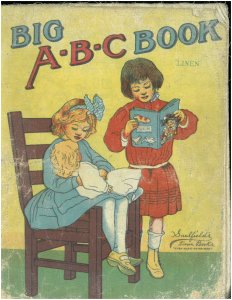
The Special Collections Research Center is excited to display a variety of nineteenth and twentieth century children's books made of cloth and related materials.
The market for children’s books expanded over the course of the nineteenth century, as childhood mortality rates dropped and literacy rates rose. British and American publishers sought to create “indestructible” books that would appeal to the parents and teachers of very young children. Linen and muslin proved to be practical and appealing materials for such books, which were usually printed with bright colors and comparatively little text.
Cloth books remained popular for almost a century before the cloth rationing of World War II shifted production towards heavy-duty paper substitutes, such as “linenette.”
The market for children’s books expanded over the course of the nineteenth century, as childhood mortality rates dropped and literacy rates rose. British and American publishers sought to create “indestructible” books that would appeal to the parents and teachers of very young children. Linen and muslin proved to be practical and appealing materials for such books, which were usually printed with bright colors and comparatively little text.
Cloth books remained popular for almost a century before the cloth rationing of World War II shifted production towards heavy-duty paper substitutes, such as “linenette.”